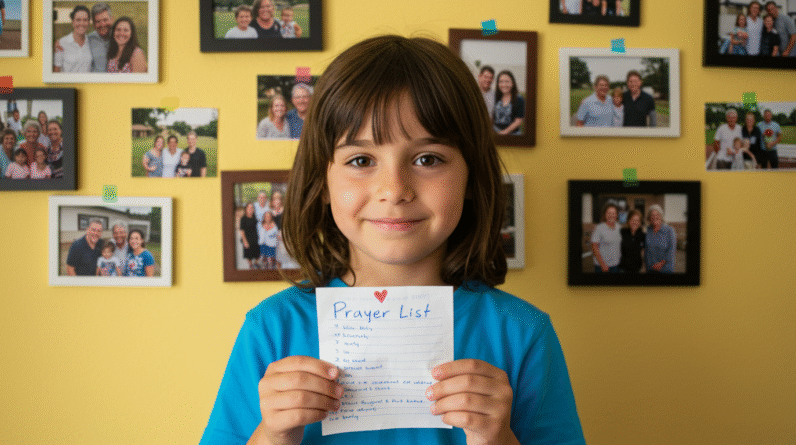Helping Shy Kids Pray Out Loud: Encouraging Confidence in Faith
In a world where vocal expression is often celebrated, shy children might find it daunting to vocalize their prayers. However, helping shy kids pray opens doors to a more confident expression of faith and encourages a deep, personal connection with spirituality. This article offers step-by-step guidance on how you can support shy children in finding their voice when it comes to praying aloud. Through gentle activities and affirming words, you can foster an environment where their confidence in faith flourishes.
Understanding the Roots of Shyness in Prayer
Shyness can be an overwhelming feeling, especially for children who are just beginning to explore their faith. It’s essential to approach this with empathy and a nuanced understanding. Perhaps you remember what it was like to feel timid or unsure in new situations. For children, these feelings are amplified when they feel exposed, like when they’re asked to pray out loud.
Shyness in prayer often stems from a fear of vulnerability. Kids may worry about saying the wrong thing or feel uncomfortable being the center of attention. They might even feel that their words aren’t “good enough” compared to others. Yet, it’s important to remind them—and ourselves—that prayer isn’t about perfection. It’s about connection and sincerity. Begin by explaining to the child that even the simplest words are heard and cherished.
Creating a Safe and Supportive Environment
Creating a nurturing space is paramount when encouraging shy kids to pray aloud. A child’s environment significantly impacts their level of comfort and willingness to participate. The atmosphere should be welcoming, devoid of judgment, and filled with patience.
Start by having open family discussions about prayer, focusing on what it means and why it’s an essential part of your faith practice. Share stories from your personal experiences, showing that it’s okay—and completely normal—to feel shy or nervous. Let them know it’s a shared journey you all are on together, so they don’t feel alone in their feelings.
Incorporate visual reminders in the room, such as inspirational quotes or imagery, to create an ambiance of peace and support. Create a prayer corner or sacred space in your home where children can retreat to pray privately until they find the courage to do it aloud.

Step-by-Step Guide to Helping Shy Kids Pray Aloud
Let’s dive into actionable steps you can take to provide your child with the encouragement they need to confidently pray out loud.
Step 1: Teach with Loving Examples
Young minds are impressionable, and leading by example is one of the most effective ways to teach. You can start by praying out loud in their presence. Keep your prayers simple and heartfelt, as this shows them that the depth of a prayer lies in sincerity rather than complexity.
Share with them moments in the Bible where individuals expressed their faith despite hardship or nervousness. Consider the story of Hannah, who poured out her soul in prayer. She didn’t focus on speaking eloquently but on being genuine. Discuss with your child how 1 Samuel 1:10 portrays her heartfelt prayer.
Step 2: Discuss the Power of Words in Faith
Engage in discussions about the power of words and how they can shape our faith and our lives. Scripture presents numerous examples of how words are integral in communicating with God. Teach children that their words, regardless of how small they may seem, carry weight and are valued.
For instance, Jesus’ teachings in the Sermon on the Mount emphasize the significance of words and intentions. You might explore this with your child through verses like Matthew 6:7, which reassures them that long, repetitive prayers are unnecessary, reinforcing that simplicity and honesty are key.
Step 3: Encourage Private Practice
Encouraging shy kids to begin with private, personal prayers can build confidence over time. Suggest they start by talking to God in the comfort of their own room. This privacy removes the pressure of an audience and allows them to experiment with their prayer style, gradually building confidence.
You might offer them a journal to write down their prayers, transitioning from written words to spoken ones. This tangible practice of expressing thoughts can bridge the gap between silent prayers and vocal ones.
Step 4: Foster Gentle Group Activities
Introduce your child to group prayer activities that gently coerce them out of their shell. Fun group activities can include forming a “prayer circle” where each member contributes a small portion to a communal prayer. It can begin with a single word or phrase, allowing them to listen and gradually join in at their comfort level.
Children also enjoy storytelling, so consider incorporating biblical stories or parables into your group prayer time, providing a basis for discussion and shared prayer. They might feel more at ease discussing familiar tales like David’s unwavering trust in God as he faced Goliath, referencing 1 Samuel 17:45 to illustrate the courage prayer imparts.
Step 5: Use Affirming Words and Reinforcement
Affirmations play a vital role in bolstering a child’s confidence. When they voice a prayer, respond with positivity and encouragement. Recognize their bravery and reaffirm the beauty of their honest communication with God.
Make it a practice to offer gentle affirmations. Compliment their willingness to share their prayers, regardless of their length or form. Let them know that even a few words can carry profound meaning and that their voice in prayer should be celebrated.
Step 6: Celebrate Milestones Together
Celebrate small achievements to motivate continued growth in their prayer journey. Make these celebrations a family affair. You could acknowledge a month’s worth of out-loud prayers with a special family dinner or let your child share a prayer in a small church group, followed by joyful encouragement.
Such celebrations mark the progress and remind them that faith journeys are built one step at a time. They create a deep sense of belonging and reinforce the connection between prayer and joy.
The Role of Patience and Persistent Support
Patience is an invaluable ally during this journey. It’s important to recognize that every child progresses at their own pace, and comparisons to others can be discouraging. Focus on persistent encouragement, making sure it’s not pushy or overbearing.
Offer consistent support, and remind them that participation in prayer is voluntary. Emphasize that God’s love doesn’t depend on how often they pray out loud or how eloquent their prayers might be.
Use this time as an opportunity to deepen your relationship with your child and explore a spiritual understanding together. Engaging in these activities can open dialogues about faith, encouraging profound personal and family growth.
Conclusion: Encouraging Confidence in Faith
Helping shy kids pray out loud is a nurturing journey you undertake hand in hand. It requires empathy, creativity, and persistent love. By teaching through examples, encouraging private practice, and celebrating every small success, you’re not just helping shy kids pray; you’re fostering an environment where their spiritual confidence can thrive.
Explore More
For further reading and encouragement, check out these posts:
👉 7 Bible Verses About Faith in Hard Times
👉 Job’s Faith: What We Can Learn From His Trials
👉 How To Trust God When Everything Falls Apart
👉 Why God Allows Suffering – A Biblical Perspective
👉 Faith Over Fear: How To Stand Strong In Uncertain Seasons
👉 How To Encourage Someone Struggling With Their Faith
👉 5 Prayers for Strength When You’re Feeling Weak

📘 Jesus and the Woman Caught in Adultery – Grace and Mercy Over Judgement
A powerful retelling of John 8:1-11. This book brings to life the depth of forgiveness, mercy, and God’s unwavering love.
👉 Check it now on Amazon
As a ClickBank Affiliate, I earn from qualifying purchases.
Acknowledgment: All Bible verses referenced in this article were accessed via Bible Gateway (or Bible Hub).
“Want to explore more? Check out our latest post on Why Jesus? and discover the life-changing truth of the Gospel!”








